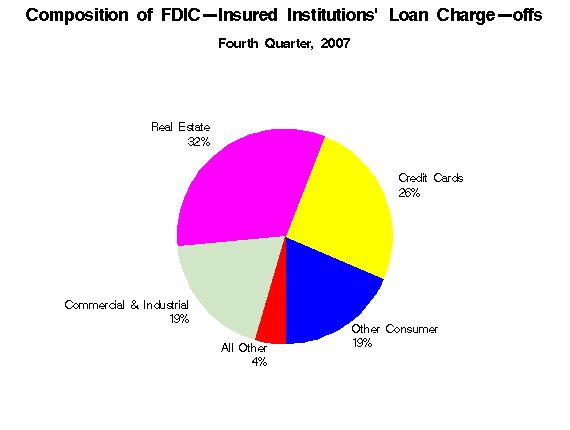In recent weeks, sales of commercial property have nearly hit a standstill. And the market value of such properties -- and the mortgages on them -- have declined as the spreading fallout from the crisis in risky, or subprime, mortgages has made credit practically evaporate.
Developers are putting the brakes on new projects, cutting deals with tenants to keep space occupied and, if possible, extending the terms of their existing debt when it comes due. Some owners, like New York's Harry Macklowe and Centro Properties of Australia, a big investor in U.S. shopping malls, are under siege by creditors, forcing them to put properties on the block.
On the bright side, however, the commercial-property downturn isn't expected to be nearly as steep as the current slump in the housing market, where recent data showed foreclosures rising to the highest level on record in the fourth quarter of 2007.
Losses by commercial-building owners, lenders and investors are likely to be tempered by the lack of overbuilding in recent years and the ability of most office buildings and other commercial ventures to keep current on their mortgages.
That's partly because commercial properties typically produce income. While millions of American homes are under water because their value has fallen below the amount owed on them, most commercial buildings are generating enough cash to pay off their loans.
"Fundamentally the markets are in pretty good shape," says James Duca, managing director of Moody's Investors Service.
Expect to state hearing the word "contained" sometime in the next 2-3 months.
In the meantime, let's see how commercial and industrial loans are effecting banks.

Commercial and industrial loans comprise 19% of the total amount of loans on the books of FDIC insured banks.

The non-current loan rate is holding steady. That's a good sign.

While the credit problems have been ticking up, they are doing so from very low levels.

But note the quarterly net charge-offs at institutions larger than 1 billion are increasing and have been for the last year. Also note they are at levels seen in the last recession.
There is an anomaly in the above graphs. The quarterly charge-offs are increasing while the percentage of current assets are remaining about the same level. My guess is the amount of overall assets is increasing at about the same rate as the net charge-offs. This would be a simple function of math (fractions to be more specific) -- the numerator (the total amount of net charge-offs) is rising as fast as the denominator (total assets). That's just a guess. Anyone else have an explanation?
The following is purely anecdotal evidence. I live in northwest Houston which is the fastest growing area of the city. I live about 5 minutes from Beltway 8. All along the access road going both north and south there has been a ton of building for the last two years. What was once empty field is not crammed with office space. The problem is the most recent buildings/additions are empty. I took a drive through the parking lot of one of the new buildings over the last few weeks, stopped and looked in the window. It was totally empty and waiting for a build-out.